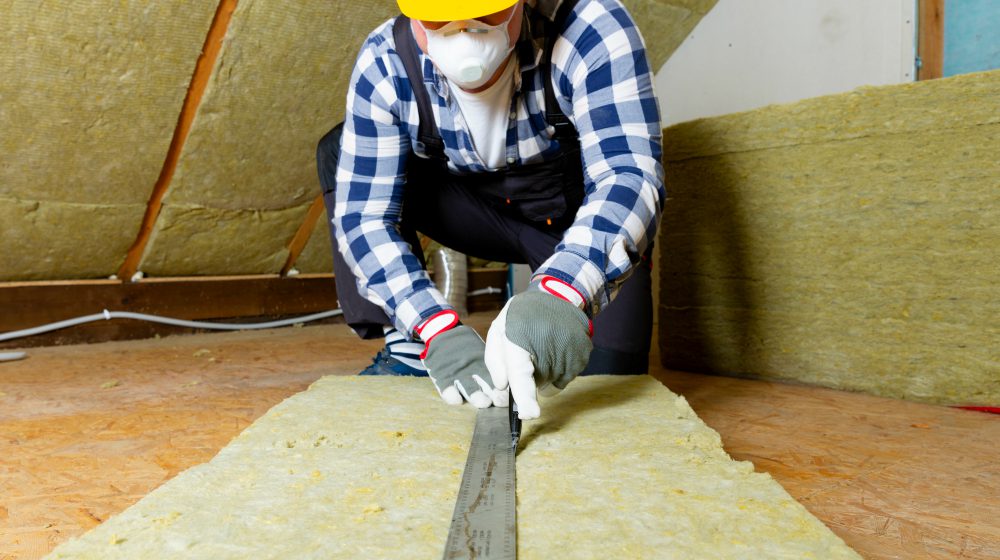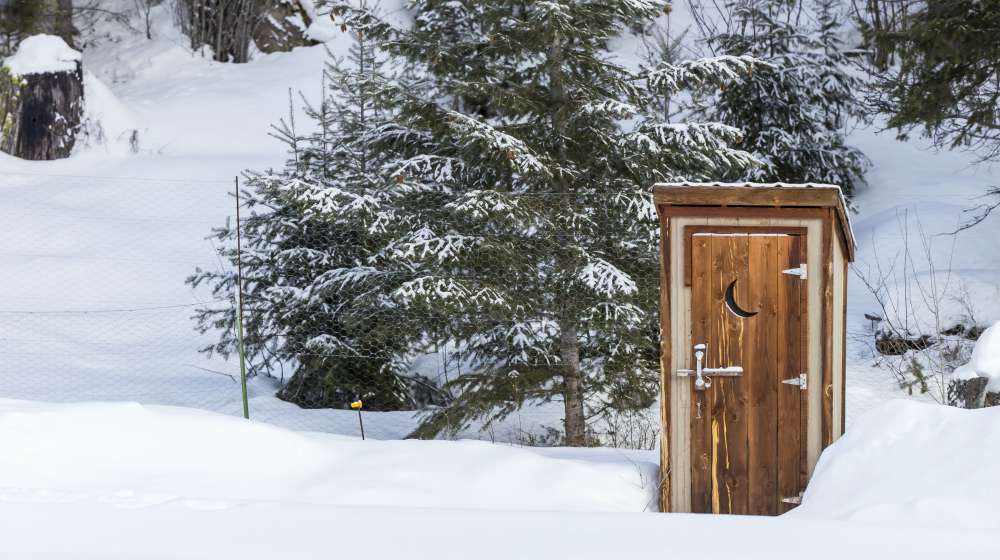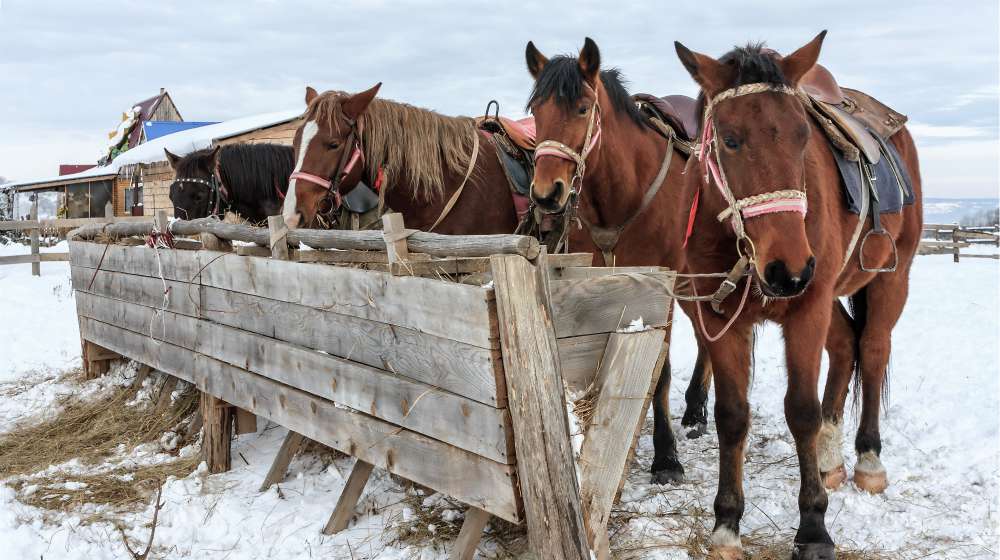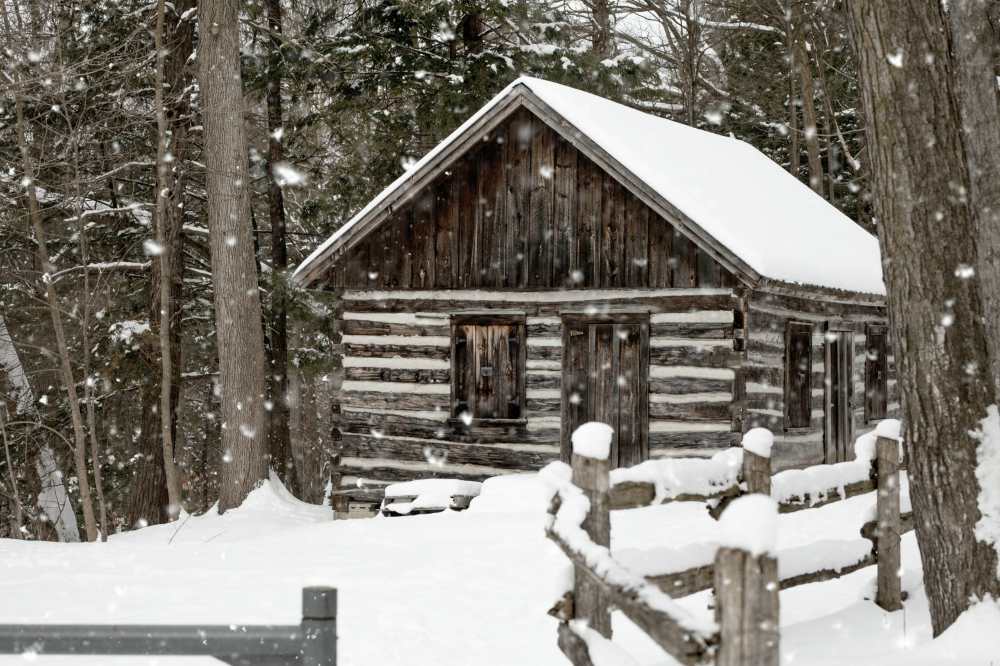Whether you live on or off the grid, winterizing your home is very important. There are several tricks and tips to keeping your home, as well as, your farm animal's homes, a little warmer during the cold months ahead.
RELATED: 35 Cold Weather Hacks To Keep You Safe And Cozy This Winter
In this article:
Winterizing Your Home | Cold Weather Preparation
The House
Avoid Drafts
Covering your windows with plastic will help keep out any cold drafts and air from coming into the house. It will also help to keep the warm air in the house where it should be.
The one thing I dislike about using plastic to help with winterizing your home is that it keeps the sun from shining directly inside. This not only takes away some extra warmth but it also eliminates such bright natural light.
What I like to do instead is find heavy thick curtains for winter. This way I can keep out the cold but also welcome the sun when it is shining.
If you have wooden floors, now would be a good time to bring out some old or invest in some new area rugs. I save up any old clothes that are not suitable for donation because of their condition and I turn them into rag rugs for the house.
It is also good to use window and door draft blockers around the doors and window sills. You can buy them in season or you can make them yourself using old tube socks or the legs of sweatpants.
If you don’t have any extra socks or pant legs laying around you can follow this DIY tutorial and make it from scratch.
Winterize Windows and Repair Window Drafts
Winter is coming and all you can think about is fixing those window drafts to keep your family as warm as possible. You're thinking about heating bills and how to lessen energy consumption, but still feel comfortable and warm during the night.
You can solve this problem with weather-tight windows. There are several ways to achieve this but we will tackle caulking and weather stripping — among the best ways of window winterization.
This approach will involve working both inside and outside of your respective windows to prevent the cold wind from entering your home.
Caulking
You may need to caulk windows that are not well sealed to prevent drafts and prevent moisture from entering. Moisture causes the paint to peel and the wood to rot.
First, you need to prepare your tools. You'll need a caulk gun, a caulk tube, utility knife, a long nail, and a scraper.
Use the scraper to remove any old caulk on the outer portion of your window. Ready the caulk tube by cutting the tip off enough to produce a bead to work on the cracks.
Don't forget to pierce the seal with a long nail to allow the caulk to flow. You can do this by inserting the nail at the tip of the nozzle until the seal is punctured.
Now, you're ready to apply the bead of caulk by using the caulk gun to fill the cracks. Do this on all sides of the window then level the caulk with your finger to smoothen it.
With these simple steps, the caulking job is done and you have a nice airtight seal!
Weather Stripping
There are many types of weather stripping but we'll talk about the easiest and most inexpensive — V-Seal and foam. Install this properly and decrease heat loss by 10%.
This method, which is available in a peel-and-stick roll, not only blocks drafts but keeps out dust and insects too. The small gaps around windows and doors often get drafty in the winter season.
Start by cleaning the surface to install the weather stripping with a damp cloth. Measure the edges where the tape is to be applied then cut accordingly.
Peel away the backing of the tape and stick to the outer edges of the window. The V-Seal weather stripping compresses when you close your window and prevents the air from flowing.
It's easy to install and effective in reducing your energy costs in the freezing temperatures of the winter months.
Attic Insulation

An important part of preparing your home for winter is making sure your attic is properly insulated. People care a lot about sealing doors and windows but they forget about the significance of the attic towards home comfort.
We don't normally use the attic like most rooms in the house. However, it is necessary to insulate the attic so other rooms below can benefit, keeping them warm in the cold season and cooler in the summer.
Moreover, it also helps reduce energy costs bills for heating and cooling. The common types of attic insulation:
- cellulose
- spray foam
- fiberglass batts
- loose-fill fiberglass
Winterizing Your Home Under the Surface
Now that you have all of the drafts covered, it’s time to make sure the water lines (water pump included) are properly insulated. You will want to insulate all of the water lines you have access to indoors, as well as outdoors.
You can purchase pipe insulation for a couple of bucks and get some heat tape to wrap the pipes in. The heat tape requires electricity so if you don’t have an outlet handy you can purchase solar powered heat tape.
It is also a really good idea to prevent the water supply from flowing to any outdoor faucets that will be out of use for the season. Wrap the whole faucet in some sort of insulation, even a thick towel can help.
I like to make sure that all of my trails and paths are free and clear of debris, sticks, or any rocks poking through. This really helps when the snow falls to ensure that you have a free and clear area under the snow.
Speaking of paths and trails, I like to set my bins of salt, kitty litter, or crushed gravel out so it is easy to access when it comes time to spread it.
The salt is great for melting away ice and snow but the gravel and kitty litter provide traction, not only for us humans, but for the critters as well.
A little warning about using salt; If you have cats, dogs or any other animals with soft padded feet be careful how much salt you use. The ice and salt together against warm paw pads can cause a reaction and slightly irritate the pads.
The Outhouse

Using an outhouse isn’t so terribly bad until it is the middle of January and everything is freezing outside, including the pit privy. It is just as important for the outhouse to be winterized as it is your house and the animal's housing.
Be sure that you have all of your lime, ash, cedar chips, and whatever else you specifically use. It is also very important to “stir the pot” which keeps it from freezing up and becoming a solid chunk of something you do not want to mess with.
Repair any drafty spaces to keep that cold breeze out as much as possible. To avoid a frozen bum you can use some sort of foam padding to cover the seat, the inside of a small life jacket works perfectly, as do certain pool noodles.
Another trick I discovered is when I first wake up and stoke the fire in the morning I will get four to six hand warmers ready to go as if I was going to use them and I place them on the seat to warm it up.
You wouldn’t believe how much it helps.
RELATED: How To Keep Your Chickens Warm In Winter
The Critters' Housing
Aside from the regular cleaning that is done to the animal housing, I do seasonal cleansing too. This consists of pulling everything out and disinfecting and sanitizing before it’s all closed up tight for the winter.
Check for any drafts or breezes. It’s also important to check up along the rafters and vents in the chicken coop to be sure snow cannot drift in and land on them.
Seal up necessary places and bring in loads of fresh straw and hay. I prefer to use a thicker rough straw for the bottom layers and softer hay for the actual bedding.
Even the pig gets a massive bed to cozy up in.
Proper Water and Nourishment

It is crucial that your animals have access to fresh water in order for them to regulate their body temperature properly. There are all sorts of methods to use to keep the water from freezing.
You can use hot rocks, solar-heated water troughs, and then switch out and stir up. The switch out method is easy if you have a small scale farm.
All you have to do is keep a bucket of warmer water indoors for the animals. If it gets too cold out switch out the buckets or add some warm water to it.
Personally, during the winter I make my rounds often to check on the animals so I bring a stir stick and stir up all of the water as I inspect.
Animal Warmth is in the Details
You can cover any windows with plastic but just as inside your home, the sun may be blocked out.
I like to seal around any cracks and leave the windows clean and clear. This will provide an ample amount of sunshine since there is not much of it during the winter months.
If you have any large animals such as goats, horses, and cattle it is important to use old blankets or buy horse blankets to throw on the animals when it’s cold to help them stay warm when they venture outdoors. Winter can be just as hard on animals as it is to us humans, so it is important to keep them in mind.
Winterizing your home is really important for your comfort and convenience. It will help keep the homestead running smoothly, as well as, keeping it nice and warm in the cold months.
Be sure your animals also have a safe space to go outdoors, witnessing a goat slip on the ice can be pretty bad. So seal up the homestead and stay warm this winter season!
In need of a few products to help with winterizing your home this season? Check out these options:
-
Give this Twin Draft Guard Extreme – Energy Saving Under Door Draft Stopper a try!
-
If you're looking for a way to ensure that your pipes don't freeze this winter, check out this 30-Foot Pipe Heating Cable with Thermostat and set your mind at ease.
- Keep your farm animal's water from freezing with an Insulated Electric Heated Double Drink Horse Waterer, you won't regret it!
Have you tried any of these tips on winterizing your home? Share your experience with us!
UP NEXT:
- Survival Tips for Winter Day Trips
- Winter Storm Preparedness | Infographic
- How To Save Energy In Winter | 11 Savvy Energy-Saving Tips
Follow us on Instagram, Twitter, Pinterest, and Facebook!
Editor’s Note: This post has been updated for quality and relevancy.


Great ideas! I have one to add. We use shower curtains on our drafty windows so that we can remove and store when winter is over. This and comforters sewn into curtains helps save on heating bills.